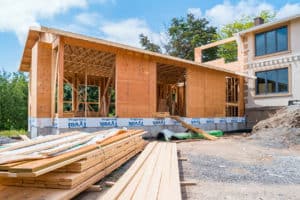Do you remember outgrowing your clothes back in your schoolyard days? You’d get a fresh new look for the upcoming school year, and before you could say “Biology 101,” your midriff would start peeking out to say hi because that’s what happens to every kid. They grow. And even though you may have loved your clothes, at a certain point, you outgrow them and need to move on.
The same concept often applies to homeowners. A young couple who buys their first home may be comfortable there for a while, but as time goes on and they start to raise a family eventually, they will outgrow their house. Fortunately, outgrowing a home doesn’t mean you have to uproot your life and move; you can expand your house with home additions like secondary suites to create extra space to fit your changing lifestyle.
But how do you go about building home additions? This article discusses the main types of home additions and who builds them.

Types of Home Additions?
Home additions come in many shapes, sizes and styles. Let’s look at the most popular types of home additions to see what kinds of benefits they offer.
Traditional Additions
The most typical kind of home addition is aptly named a conventional house addition. This type of addition is usually a multi-room structure that gets added right onto the side of your home. It’s basically as if the house grew an extra wing. You can use conventional addition for almost any purpose, including:
- Primary or Guest Bedrooms
- Dining Room
- Family Room
- Playroom for Kids
- Any other room you would like.
Because of the extensive nature of conventional additions, they are very expensive. The price tag for an addition like this can easily get into five figures.
Secondary Suites and Bump Outs
Secondary suites are similar to traditional additions, the difference being the scope of the project. Instead of a multi-room structure built onto the side of your house, a secondary suite is a single room structure built onto the side of your home. Secondary suites are an awesome way to give growing children more space to play or give a teenager more privacy as they grow out of their childhood bedroom.
Bump outs, on the other hand, might not even add a new room to the structure. Sometimes they are built to increase the square footage of an existing room to add a new dimension, like expanding a kitchen to add space for an island or dining area.
Which Contractors Build Home Additions?
When planning your home additions, it’s extremely important you find reliable, certified contractors to ensure the project runs smoothly from start to finish. Most renovation and construction contractors will be able to build home additions, but you want the best. So, where should you start looking?
Ask Around
A tactic as old as time, ask around. Spend some time asking friends, family, or coworkers about their experience with contractors when they were building home additions. Speaking directly with people who have experience with local contractors can give you unique insight into their strengths and weaknesses. Here is a small list of questions you can ask:
- Did your project go way over budget? If so, was it the contractors’ fault??
- Did your project take way longer than expected? If so, was it the contractors’ fault?
- Did they complete the job to your satisfaction?
- Did they leave a mess when they packed up and left?
- Were they easy to contact and have honest communication?
If you don’t know anyone who’s done a home addition project, the next best thing is to read reviews and customer testimonials online. And don’t forget to visit the contractor’s website to look at past projects of theirs. If they claim to build beautiful secondary suites but don’t show examples on their website, they may not be doing the best work, and you should look for another contractor.
Verify Their Credentials
The last step you should take when hiring contractors is verifying their credentials. If they show hesitancy when you ask, that’s a major red flag. Certified contractors will have no problem proving their credibility with potential customers.

Recent Comments